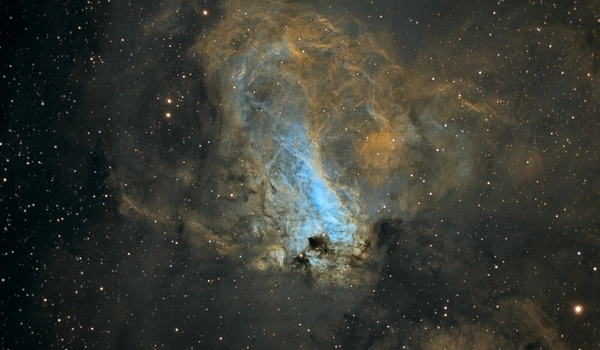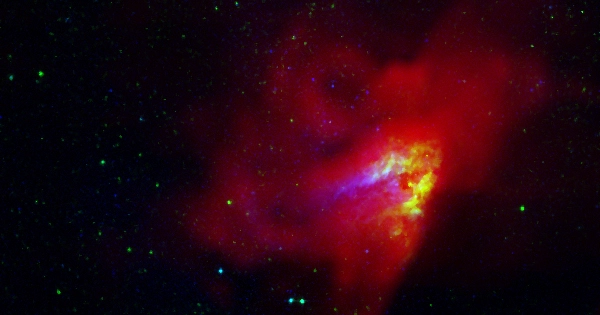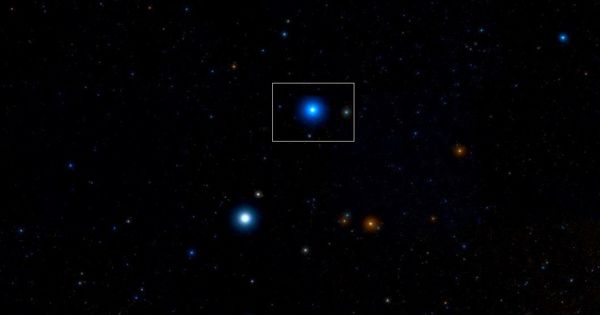The Omega Nebula, also known as the Swan Nebula or the Horseshoe Nebula, is a large, bright-emission nebula located in the constellation Sagittarius. It is one of the most massive and luminous star-forming regions in our Milky Way galaxy. It is an H II region in the constellation Sagittarius (catalogued as Messier 17 or M17 or NGC 6618). Philippe Loys de Chéseaux discovered it in 1745. In 1764, Charles Messier cataloged it. It is surrounded by some of the Milky Way’s richest starfields, which can be found in the northern two-thirds of Sagittarius.
The Omega Nebula is approximately 5,000 light-years away from Earth and spans a region of about 15 light-years across. It is characterized by its striking pink and blue colors, which are the result of the ionization of hydrogen gas by the radiation from newly formed stars within the nebula.
The Omega Nebula contains a cluster of young, hot stars called NGC 6611, which is responsible for the ionization of the surrounding gas. The intense radiation from these stars also causes the gas to glow brightly, creating the stunning visual display that we see.

Characteristics
The Omega Nebula is located between 5,000 and 6,000 light-years from Earth and has a diameter of 15 light-years. This nebula is part of a cloud of interstellar matter 40 light-years in diameter and 30,000 solar masses in mass. The Omega Nebula’s total mass is estimated to be 800 solar masses.
It is thought to be one of our galaxy’s brightest and most massive star-forming regions. It has the same local geometry as the Orion Nebula, but it is viewed edge-on rather than face-on.
In addition to the hot young stars, the Omega Nebula also contains numerous cold, dense pockets of gas and dust where new stars are currently forming. These pockets are known as Bok globules, and they represent some of the earliest stages of star formation.
The Omega Nebula is a popular target for amateur astronomers and astrophotographers due to its size and striking appearance. It was first discovered by the Swiss astronomer Jean-Philippe de Cheseaux in 1745 and has since become one of the most iconic objects in the night sky.
















